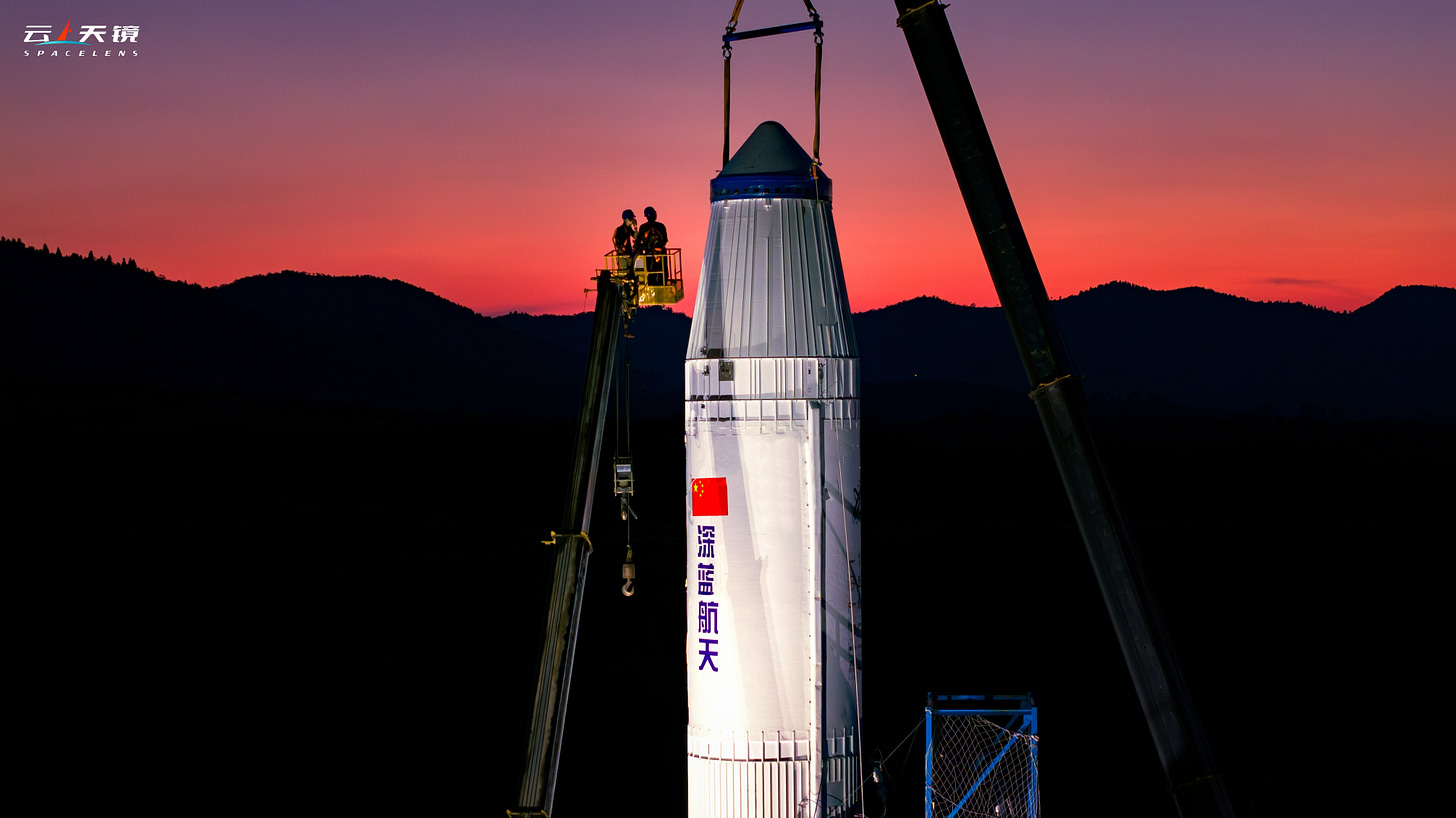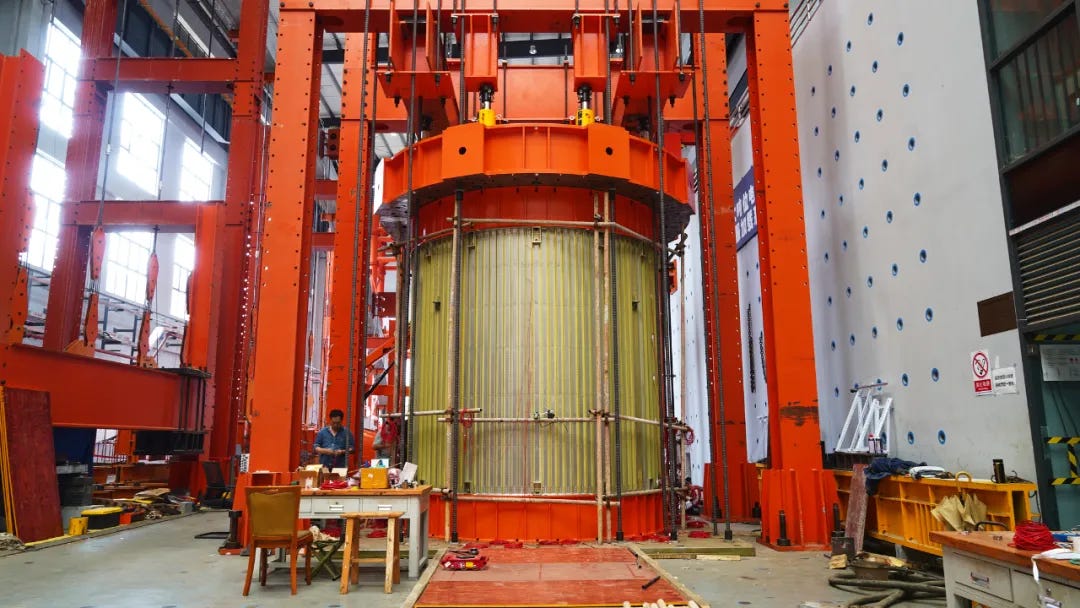Static fires and structural testing completed for two new reusable rockets
Deep Blue Aerospace and CAS Space have recently completed a series of tests for their reusable launch vehicles.

Both Deep Blue Aerospace and CAS Space have been pushing ahead with development on each of their respective launch vehicles in recent weeks. Deep Blue’s developments are more visually interesting so let’s take a look at what they’ve been up to first!
Deep Blue Aerospace
Deep Blue Aerospace’s Nebula-1 test vehicle conducted another static fire on July 21st. This comes a little over two months after a 200-second three-engine static fire of the same test vehicle.
According to Deep Blue, the test simulated “full working conditions of high-altitude recovery flight” across a wide range of engine throttle ranges, the test reportedly lasted for 180 seconds. Also attached to the test vehicle for this static fire was one of the landing legs, and allegedly a grid fin, that would be used on a ‘hop’ test.
Both a landing leg and grid fin were included for this static fire to verify both systems in flight-like vibration and thermal environment. Deep Blue Aerospace said after the static fire that the engines, grid fin, and landing leg were inspected and confirmed to be in good condition having successfully performed their tests.
Four of each of these will be needed for an upcoming vertical-takeoff vertical-landing test this year. Deep Blue has not given a timeframe for when this test will take place, but it will likely occur inside the Jiuquan Satellite Launch Center from the same test pad used by state-owned ‘hop’ tests.
Deep Blue’s choice to include grid fins on its test vehicle may be indicative of a possible ‘unpowered descent’ portion of its ‘hop’ test, which would be a first in China as all vertical-takeoff vertical-landing ‘hop’ tests so far have had at least one engine running the entire time. However, the company has not yet said how high the ‘hop’ test will fly beyond “high-altitude vertical recovery flight test”.
Back on July 8th, Deep Blue performed a deployment test of its grid fin deployment system inside one of their facilities. The test had the system simulate the full deployment process, without aerodynamic and thermal forces acting on it. Deep Blue claims that this test “verified the correctness and rationality of the design”.
Deep Blue Aerospace still remains confident in a ‘hop’ test and maiden flight for Nebula-1 in 2024. It is currently unclear if the maiden launch of Nebula-1 will include a landing attempt of the first-stage.
CAS Space
Recently on July 18th, CAS Space completed a static stress test of the Kinetica-2 interstage. According to CAS Space, this component of the rocket is 3.1 meters long and 3.35 meters in diameter, the same diameter as both stages.
The test is believed to have simulated a force of over 800 tons, which is what is expected during flight, on the test interstage as CAS Space was hoping to “verify the correctness of the design of the most representative structural scheme that can bear the maximum axial pressure”. In flight this part of the launch vehicle would be attached to the top of the first-stage and the bottom of the second-stage, CAS Space says the bottom of the second-stage would be the liquid kerosene propellant tank.
This test for the interstage was reportedly gradually increased to test stress’ at various loads until it reached 140% of expected flight loads. After the load stress tests, CAS Space claims that the loads experienced were similar to their simulations and that the test interstage was in good condition.
Ending their blog post about the test CAS Space said their research and development team is hoping to find possible optimizations for the interstage based on the test results.
LandSpace
There are also rumors around LandSpace’s second vertical-takeoff vertical-landing test with its Zhuque-3 VTVL test vehicle at the time of writing, late on July 21st. These rumors are that the test is imminent, or has possibly already happened. Any test involving a ‘hop’ from LandSpace would occur at its Jiuquan Satellite Launch Center facilities.
This hop test with the Zhuque-3 VTVL test vehicle would have it fly up to 10 kilometers, perform an unpowered descent, and then reignite its engine to land. The test vehicle is believed to have had grid fins installed since the last flight, it’s unknown if the engine potentially being used will be the same as the last flight.





